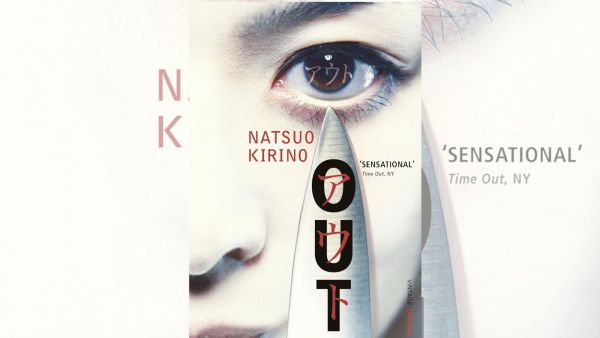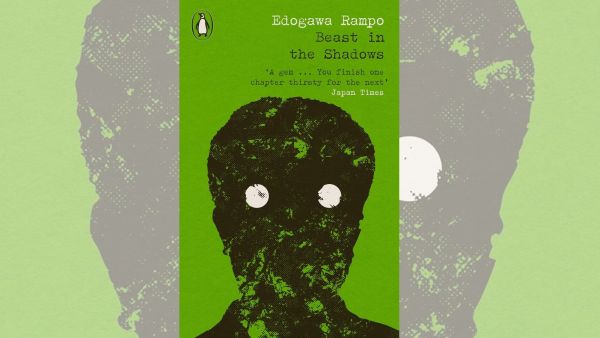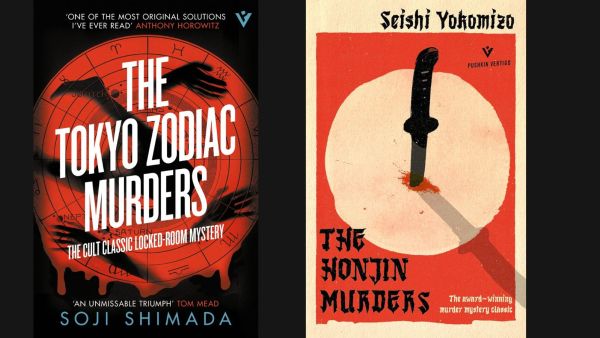It is as regular as the seasons. Every decade or so, the world becomes enraptured by thrillers from a non-English-speaking country or region, or, to use the terminology of the modern, socially networked day, a certain region or country trends on the thriller list. Almost two decades ago, Scandinavia became the darling of crime fiction lovers with the publication of Stieg Larsson’s bestselling The Girl With the Dragon Tattoo. Although authors from the region had been reasonably well-known in the past, Larsson’s book opened the global floodgates for them, and the likes of Henning Mankell, Jo Nesbo and Arnaldur Indriðason became household names. And after the era of suspense from Scandinavia, it is now time for Thrillers from Tokyo. Japanese thrillers are all the rage among readers, as interest in the country’s literature grows, spurred by the popularity of anime and manga. And if you want your crime cuisine the Japanese way, then there is a lot on the menu to choose from.
The book that started it all
 The book that triggered interest in Japanese suspense fiction in India was Keigo Higashino’s The Devotion of Suspect X.
The book that triggered interest in Japanese suspense fiction in India was Keigo Higashino’s The Devotion of Suspect X.
The book that triggered interest in Japanese suspense fiction in India was Keigo Higashino’s The Devotion of Suspect X. Although it was published in 2005, and received considerable acclaim in the West (Higashino was hailed as the “Japanese Stieg Larsson“), it shot into the spotlight in India in 2013, when some claimed that Jeetu Joseph’s superhit Malayalam film Drishyam was inspired by it. Joseph has denied this time and again, but talk a similarities between the film and the book (there are a few, but allegations of the film being inspired by it do seem exaggerated) led to people picking up the book in large numbers. And such was Higashino’s narration, that they came back for more. And suddenly, booksellers started getting queries about thrillers from Japan.
The Devotion of Suspect X remains a very good starting point for those who want to read Japanese suspense. Higashino is not your conventional thrill-deliverer, but builds up elaborate plots revolving around feelings of people and their circumstances, whom he often etches in detail. The Devotion of Suspect X revolves around the attempts of a mathematics teacher to save a woman he secretly loves, and who has killed her abusive husband. It contains one of the most detailed and carefully constructed works in crime fiction (very similar to the one seen in Drishyam), and also introduced Detective Galileo, or Manabu Yukawa, one of the most famous figures in Japanese crime fiction. The book might strike some as a little on the slow side, as Higashino is more a storyteller than a builder of suspense, but its sensitivity and sudden twists towards the end will keep you riveted.
Story continues below this ad
The Japanese Gillian Flynn
 The Devotion of Suspect X is as much a novel as a thriller, elegant, with a gradual build-up. (Source: amazon.in)
The Devotion of Suspect X is as much a novel as a thriller, elegant, with a gradual build-up. (Source: amazon.in)
The Devotion of Suspect X is as much a novel as a thriller, elegant, with a gradual build-up. If you are looking for something that is a little faster and constantly fascinating (Higashino might seem slow), then grab a copy of Out. Written by Natsuo Kirino (Mariko Hashioka), it makes for grim, gritty reading with twists coming at a rapid pace, laden with violence and betrayal that borders on the disturbing. Lest you think we are exaggerating, it is the story of four women, one of whom kills an abusive husband (a disturbingly recurring theme in Japanese crime fiction), and then with the assistance of the others, chops his body into pieces and then disposes of it. Of course, it is discovered, but what follows is not a simple “cops and killer” routine but something far more complicated.
The relationships between the four women change, with some even trying to exploit each other, even as an acquaintance of the dead man starts hunting them down, with the police trying to figure out what has happened. It is laden with twists and not really for those with weak hearts. Another Kirino book for those not easily rattled is Grotesque. It is told from four perspectives, including one of the victim, and one of the murderer. If Keigo Higashino is the Japanese Stieg Larsson, then Natsuo Kirino is the Japanese Gillian Flynn of Gone Girl fame. It is disturbingly dark but a delight for thriller readers. Readers will keep turning pages despite getting rattled.
The Honkaku Mystery masters
 Beast in the Shadows is told from the perspective of a crime writer who is asked to help a woman receiving strange letters.
Beast in the Shadows is told from the perspective of a crime writer who is asked to help a woman receiving strange letters.
A trademark of slightly more conventional Japanese crime fiction is the Honkaku Mystery, where readers are provided all the information and can try to figure out the truth themselves. In a way, they are competing with the detective when it comes to solving mysteries. The stress is on observation, deduction and logical reasoning. Reading a Honkaku Mystery is a little like solving a puzzle.
The first Honkaku Mystery, The Two Sen Copper Coin, which was published in 1923 was written by the man who people call the father of Japanese mystery: Edogawa Ranpo. His real name was Taro Hirai, but he took on Edogawa Ranpo as his pen name, because when pronounced, it sounded almost exactly like the legendary Edgar Allan Poe. His best Honkaku, however, is Beast in the Shadows, which is told from the perspective of a crime writer who is asked to help a woman receiving strange letters. It seems a little slow by modern standards, but it is a riveting read once you get past the first few dozen pages.
Story continues below this ad
Another master of the Honkaku genre is Seishi Yokomizo, whose series of locked room mysteries made people refer to him as the Japanese John Dickson Carr, Yokomizo is the creator of perhaps Japan’s most popular amateur detective (yes, more popular even than Inspector Galileo), Kosuke Kindaichi, who makes his debut in the bestselling The Honjin Murders, which was published in 1946. A newlywed couple is found dead inside, you guessed it, a locked room. There are not too many clues.
 Seishi Yokomizo and Soji Shimada are masters of the Honkaku genre. (Source: amazon.in)
Seishi Yokomizo and Soji Shimada are masters of the Honkaku genre. (Source: amazon.in)
Who did it? Kosuke Kindaichi finds out and does so in a manner that will leave readers fascinated. Kindaichi features in several other books, but The Honjin Murders is a great starting point. Another Honkaku Mystery that has attained almost legendary status is The Tokyo Zodiac Murders by Soji Shimada. The book was published in 1981 and in the manner of the legendary Edgar Wallace, actually challenges readers to solve the mystery. Based in 1Fs979, it revolves around two people, one of whom is a fortune teller, trying to solve an unsolved murder case from 1936. It is complex and a little heavy, but compelling reading once you get familiar with the characters.
The Japanese Maigret
 A more conventional and elegant work of suspense is Seicho Matsumoto’s police procedural Inspector Imanishi Investigates. (Source: amazon.in)
A more conventional and elegant work of suspense is Seicho Matsumoto’s police procedural Inspector Imanishi Investigates. (Source: amazon.in)
A more conventional and elegant work of suspense is Seicho Matsumoto’s police procedural Inspector Imanishi Investigates. As its name indicates, it is about how Inspector Imanshi Eltaro tries to solve the mystery of an unknown body found on a rail track. Imanshi’s fondness for haiku poetry and gardening make him an interesting choice as master detective as he travels across Japan, trying to solve a case that many feel has no clear solution. Matsumoto’s carefully crafted and often intricate narrative has led to comparisons with Georges Simenon’s famous Maigret series. There is not too much action, just a lot of questions, answers and observation, all while giving the reader a snapshot of Japan and the dedicated Imanshi. Interestingly, Matsumoto never attended secondary school or university. He just read. A lot. And wrote.



AloJapan.com